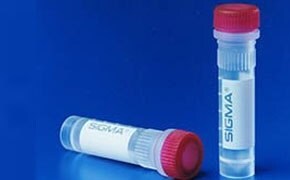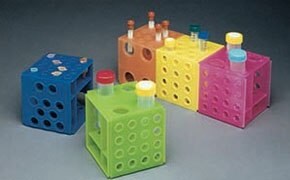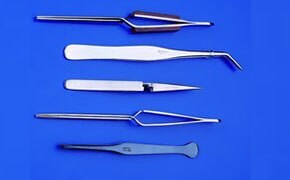Laboratory Sample Collection
Sample management is key to an efficient lab. Sample collection and storage solutions should be selected based on sample type, application, and handling needs. Smart solutions facilitate sample identification, tracing, and recovery while offering ergonomic design for convenience and safety. We offer a variety of sample storage and laboratory storage solutions including vials, tubes, bottles, bags, plates, racks, and sealing films to protect your samples and meet your lab's storage needs. We also provide tweezers and forceps, lab spatulas and spoons, and cell lifters, spreaders, and strainers for efficient sample collection.
Products
- Page 1
- Page 2
- Page 3
- Page 4
- Page 5
- Page 6
- Page 7
- Page 8
- Page 9
- Page 10
- Page 11
- Page 12
- Page 13
- Page 14
- Page 15
- Page 16
- Page 17
- Page 18
- Page 19
- Page 20
- Page 21
- Page 22
- Page 23
- Page 24
- Page 25
- Page 26
- Page 27
- Page 28
- Page 29
- Page 30
- Page 31
- Page 32
- Page 33
- Page 34
- Page 35
- Page 36
- Page 37
- Page 38
- Page 39
- Page 40
- Page 41
- Page 42
- Page 43
- Page 44
- Page 45
- Page 46
- Page 47
- Page 48
- Page 49
- Page 50
- Page 51
- Page 52
- Page 53
- Page 54
- Page 55
- Page 56
- Page 57
- Page 58
- Page 1
- Page 2
- Page 3
- Page 4
- Page 5
- Page 6
- Page 7
- Page 8
- Page 9
- Page 10
- Page 11
- Page 12
- Page 13
- Page 14
- Page 15
- Page 16
- Page 17
- Page 18
- Page 19
- Page 20
- Page 21
- Page 22
- Page 23
- Page 24
- Page 25
- Page 26
- Page 27
- Page 28
- Page 29
- Page 30
- Page 31
- Page 32
- Page 33
- Page 34
- Page 35
- Page 36
- Page 37
- Page 38
- Page 39
- Page 40
- Page 41
- Page 42
- Page 43
- Page 44
- Page 45
- Page 46
- Page 47
- Page 48
- Page 49
- Page 50
- Page 51
- Page 52
- Page 53
- Page 54
- Page 55
- Page 56
- Page 57
- Page 58
Vials
Vials can be used for collection, storage, and transport of samples and are available in a variety of materials, sizes, and shapes with various closures for sample preservation and recovery. Glass vials are more resistant to higher temperatures and are typically more chemically inert, making them compatible with harsh detergents and solvents. Plastic vials won't shatter as easily and are available in several materials to increase chemical compatibility and autoclavability. Both types of vial are available in sterile and non-sterile versions. Vials are clear for easy sample visualization or made of amber glass or tinted plastic for samples that are sensitive to light. Colored caps enable for quick identification of samples.
Tubes
Tubes are used for solid or liquid sample collection, transport, storage, and testing. While some tubes are designed for general use, application-specific tubes including test tubes, culture tubes, centrifuge tubes, microcentrifuge tubes, PCR tubes, and cryotubes are designed to meet specific temperature, force, sterility, and chemical compatibility requirements. Multiple types of glass and plastic tube materials can be selected based on durability, inertness, and other characteristics. Round-bottom and conical-bottom tubes can increase sample recovery. Disposable and reusable tubes are available based on convenience and safety needs. Screw caps provide extra safety in preventing leakage and spilling. Plug closures and snap closures facilitate easier tube manipulation.
Bottles
Bottles are most often used to store chemicals, solvents, and other liquids, and are available in specific shapes to suit recovery, safety, and storage needs. Bottles are made from glass for inertness or various plastics that have different chemical compatibilities. Clear glass or natural plastics allow maximum visibility. Amber-tinted glass and opaque plastics are recommended for light-sensitive materials. Bottles may be disposable or made of materials supporting autoclavability or cleaning for re-use as needed.
Bags
Whirl-Pak® sterilized sampling bags are ideal for food & beverage, dairy, water, medical, veterinary, environmental, soil, and industrial markets as well as surface, forensic science, genetics, biomedical, and pharmaceutical sampling. Whirl-Pak® bags have been the professionals’ trusted sampling bag for 60 years and offer puncture-proof closure tabs, guaranteed sterility, easy identification, and a leak-proof closure you can rely on.
Tweezers and Spatulas
Laboratory tweezers and forceps are small tools useful in a range of laboratory and other working environments for gripping and manipulating small or delicate objects. Tweezers and forceps are available in a range of sizes, styles, and design variations:
- With pointed, blunt, rounded, curved, angled, or flat tips
- With plain or serrated inner surfaces for extra grip
- With scissor-type handles
- With defined dimensions for precision work
- With foam or silicone-covered handles or tips for extra grip
- With self-closing/locking guide pins to keep the tips aligned for a firmer grip
- With an inert PTFE coating to prevent contamination, scratching, or damage of delicate samples
Spatulas are available in a range of sizes and styles designed for breaking up, scraping off, picking up, and transferring chemical solids, powders, granules, or other materials. Laboratory spatulas are manufactured with handles of varying lengths, with one or both tips fashioned into tooled ends of various shapes or designs depending upon the intended application.
Racks
Racks are used to support, organize, and store various types of glassware, labware and other items. Laboratory racks are available for pipets, test tubes, microtubes, vials, petri dishes, microplates, and other labware. Racks are made from a variety of materials including plain and epoxy-coated metal, wood, and various plastics. Racks for test tubes and microtubes have openings of various sizes to accommodate specific tube diameters.
Microplates
Microplates are multi-well plates used for sample storage, biochemical and cellular assays, and analytical methods. Lids, film, tape, caps, or mats can be used to seal plates during processing, incubation, or storage. Plates should be selected based on:
- Material: Microplates are typically made of glass or plastic. Glass-bottom microplates have excellent optical properties and are typically reserved for high content cell imaging applications. Plastic-bottom plates can be used for a variety of fluorescence, colorimetric, cell culture, and cell imaging applications. Cyclic olefin plates are made of a polymer that both supports cell adherence and offers optical properties similar to glass.
- Well number: Plates are available in 24-, 96-, 384-, and 1536-well formats depending on throughput needs and volume requirements
- Well shape: Round-bottom wells help ensure mixing and facilitate recovery of samples when needed. Flat bottom plates are required for imaging applications.
- Plate color: Black plates are typically used for fluorescent and high signal luminescent applications to reduce background phosphorescence and autofluorescence. White plates can be used for time-resolved fluorescence and low signal luminescence assays. Clear-bottom plates enable bottom-reading measurements and microscopic visualization.
- Plate coatings: plates are available pre-treated for sterility or low protein binding, or coated with collagen, poly-D-lysine, and other molecules to facilitate cell attachment
To continue reading please sign in or create an account.
Don't Have An Account?


